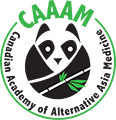Thai massage, also known as Nuad Bo-Rarn or Thai Yoga Massage, is a therapeutic practice that has gained international recognition for its unique blend of yoga-like stretching, acupressure, and energy work. This ancient healing art has a history as rich and diverse as the culture from which it emerged. In this blog post, we will delve into the fascinating history and origins of Thai massage.
The Birthplace of Thai Massage
Thai massage traces its roots back to the ancient kingdom of Siam, now modern-day Thailand. While the exact origins of Thai massage are somewhat shrouded in mystery, it is widely believed to have been developed over 2,500 years ago. Its beginnings are attributed to Jivaka Kumar Bhaccha, a renowned Ayurvedic doctor and healer who was also a contemporary of Gautama Buddha.
Jivaka’s teachings and techniques were inspired by Indian Ayurvedic medicine and combined with the local healing traditions of Thailand. The resulting practice became what we now know as Thai massage, embodying a unique fusion of Indian and Southeast Asian influences.
Influence of Buddhism and Yoga
Buddhism played a significant role in the development of Thai massage. As Buddhism spread throughout Southeast Asia, it brought with it an emphasis on meditation, mindfulness, and physical well-being. Monks in Thai monasteries recognized the value of healing through touch and developed Thai massage as a way to promote physical and spiritual wellness.
Thai massage’s yoga-like stretches are reminiscent of certain yoga asanas (postures), and this is no coincidence. The techniques involved in Thai massage draw inspiration from yoga positions and the concept of energy lines, or “Sen” lines in Thai. By aligning and stretching the body, Thai massage aims to clear blockages in the Sen lines, promoting the flow of energy and enhancing overall health.
The Royal Influence
Thai massage’s reputation as a healing art eventually reached the royal courts. In the 18th century, King Rama III ordered the compilation of a comprehensive Thai medical text known as the “Tamra Phlu” or “The Royal Scripture.” This text played a pivotal role in preserving and formalizing the practice of Thai massage. It provided detailed descriptions of techniques, energy lines, and the therapeutic benefits of this art, ensuring its continued transmission through generations.
Thai Massage as an Oral Tradition
For much of its history, Thai massage was passed down through oral tradition. Healers and therapists shared their knowledge within families and communities, carefully guarding their techniques and secrets. These practitioners were held in high esteem and considered invaluable members of their communities.
The Revival and Global Spread
While Thai massage remained popular within Thailand for centuries, it wasn’t until the late 20th century that it began to gain recognition beyond its borders. This surge in popularity can be attributed to the efforts of several key figures who brought Thai massage to the global stage.
One such figure is the famous Thai massage instructor and practitioner, Asokananda (Harald Brust). Asokananda’s work and publications helped introduce Thai massage to the world. His book, “The Art of Traditional Thai Massage,” published in 1990, was instrumental in educating people about the techniques and philosophy behind Thai massage.
With the rise of interest in holistic health practices and alternative therapies, Thai massage began to find its place in wellness and spa industries worldwide. Today, you can find Thai massage centers and practitioners in many countries, offering a diverse range of techniques and styles adapted to local preferences.
The Essence of Thai Massage
The unique blend of physical techniques, energy work, and spiritual elements that Thai massage encompasses reflects the multicultural history of the region and the holistic approach to healing. This ancient practice, deeply rooted in Thai culture, has transcended its origins to become a global symbol of wellness and relaxation.
Conclusion
Thai massage, with its blend of Indian and Southeast Asian influences, has a rich history that spans over two millennia. Rooted in the ancient kingdom of Siam, it has evolved through royal patronage and cultural exchange. Today, Thai massage is celebrated worldwide for its therapeutic benefits and its holistic approach to healing the body, mind, and spirit. As the practice continues to adapt and evolve, its historical and cultural significance remains an essential part of its identity, ensuring that the art of Thai massage continues to flourish and heal for generations to come.
At Canadian Academy of Alternative Asia Medicine, we offer services like Nuad Thai Massage, Reflexology, Osteopathy, Oil Massage, Registered Massage Therapy and Hot Stone Massage. Book an appointment with our Calgary or Mississauga location now.
